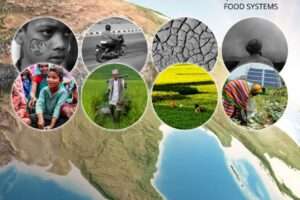Efforts to achieve coordinated, effective, and impactful adaptation outcomes are complicated by factors ranging from the local specificity of adaptation needs to the challenges of politics and prioritization that drive funding decisions. However, these and other challenges are perpetuated and exacerbated by poorly constructed, often implicit, and generally institution- or context-specific impact pathways connecting policy/institutional priorities through their materialization in specific actions to their intended outcomes. We call these impact pathways adaptation rationales, as they represent the logic of an adaptation action. The implicit nature of most current adaptation rationales makes it difficult to identify and test the accuracy and veracity of claims and assumptions underlying everything from policy priorities to intervention selection. In this article, we address this foundational challenge for the adaptation community of practice by proposing a typology of adaptation benefits (reduced exposure, reduced sensitivity, and increased adaptive capacity) that facilitates the construction of meaningful, transparent adaptation rationales. We lay out what these well-understood components of vulnerability mean in the context of adaptation benefits and provide guiding questions for their use in constructing adaptation rationales. Using hypothetical and real-world examples of projects and portfolios, we illustrate how this typology and the adaptation rationales it enables focus attention on the goals of a given action, its likely effectiveness, and for whom it is likely to be effective. Each of these issues offers an opportunity to strengthen project design, implementation, monitoring, and evaluation, while also facilitating portfolio-level understandings of adaptation approaches, assumptions, and efficacy. This typology does not, by itself, presume to resolve the many debates in adaptation practice, such as the tension between incremental and transformational goals, the tradeoffs between actions addressing exposure via infrastructure versus those aimed at the underlying structures of inequality that render some populations more vulnerable to these impacts than others. However, by bringing issues of governance and justice the forefront of adaptation conversations, the typology, and the adaptation rationales it enables, allows for the productive, situationally-appropriate negotiation of these debates to improve the outcomes of adaptation policy and action.
Adaptation rationales and benefits: A foundation for understanding adaptation impact
January 30, 2023
98 Views
2 Min Read

-
Share This!




Add Comment